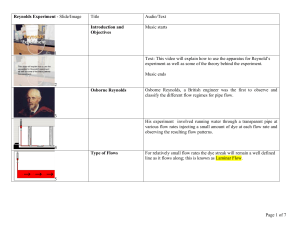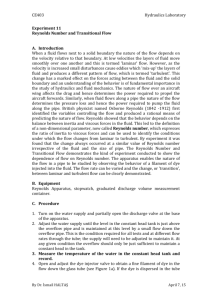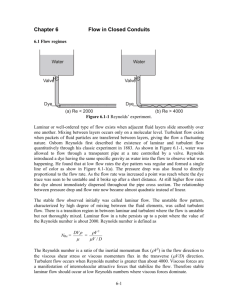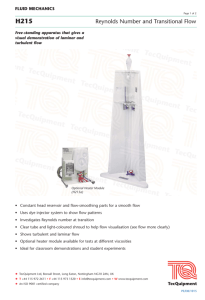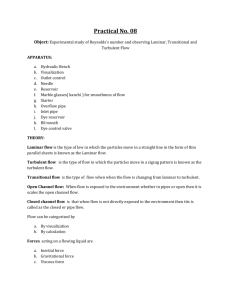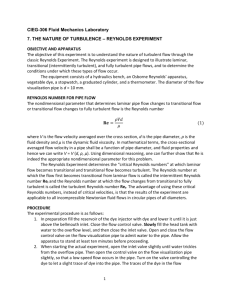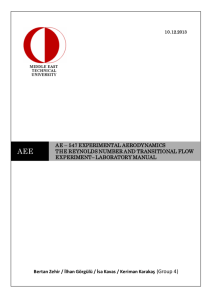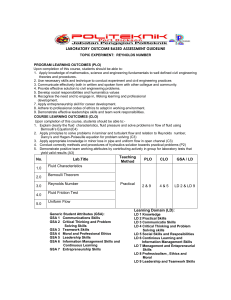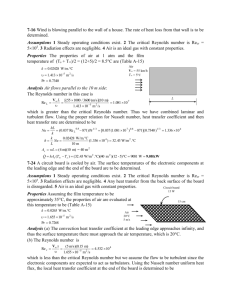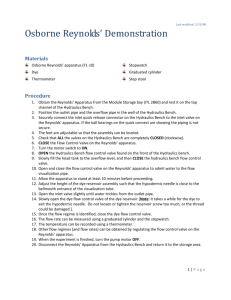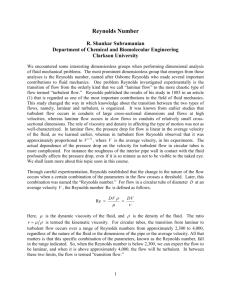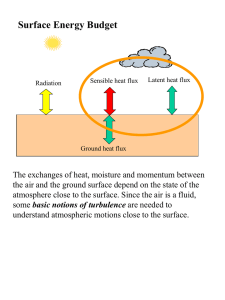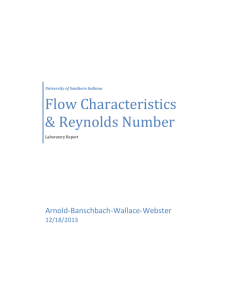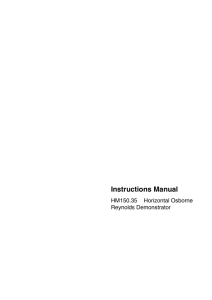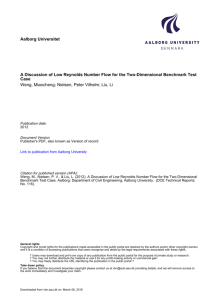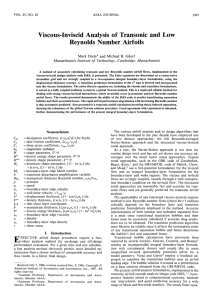reynolds experiment - Department of Civil Engineering | Anadolu
advertisement
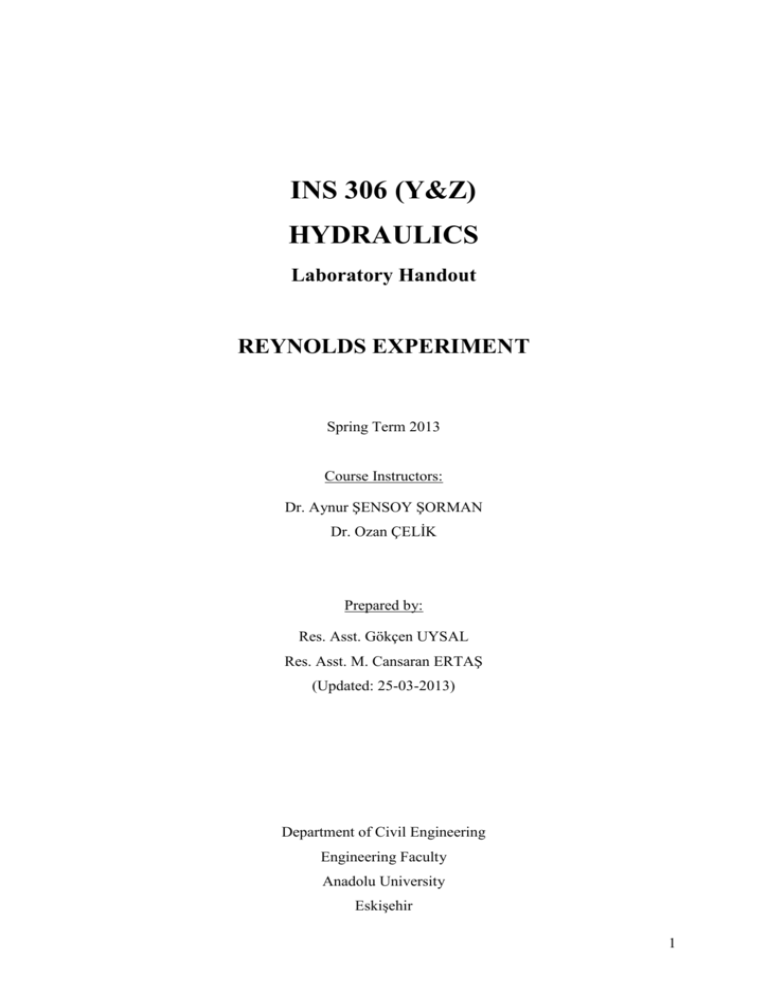
INS 306 (Y&Z) HYDRAULICS Laboratory Handout REYNOLDS EXPERIMENT Spring Term 2013 Course Instructors: Dr. Aynur ŞENSOY ŞORMAN Dr. Ozan ÇELİK Prepared by: Res. Asst. Gökçen UYSAL Res. Asst. M. Cansaran ERTAŞ (Updated: 25-03-2013) Department of Civil Engineering Engineering Faculty Anadolu University Eskişehir 1 Description The Reynolds number (Re) is a dimensionless ratio of inertia forces to viscous forces and is used in determining the type of flow occurring: laminar or turbulent. In most engineering text books, a Reynolds number of 2300 is usually accepted as the value at transition; that is, the value of the Reynolds number between laminar and turbulent flow regimes. The Reynolds number that exists anywhere in the transition region is called the critical Reynolds number. The objective of this experiment is to determine the range of Reynolds numbers by Reynolds apparatus (Figure 1) over which transition occurs. Given the tube size (12 mm), the Reynolds number can be calculated as: Re V Dh where, Re = Reynolds number V = velocity of fluid (m/s) Dh = hydraulic diameter (m) (mu) = dynamic viscosity of fluid (N.s/m2) ν (nu) = kinematic viscosity of fluid (m2/s) ρ (rho) = density (kg/m3) The hydraulic diameter (different than hydraulic radius) is calculated as: Dh 4 * Area 4*A Wetted Perimeter Pw 2 Figure 1. Reynold number (Re) Apparatus Experimental Procedure: 1. Turn on the water, and partially open the discharge valve at the base of the apparatus. 2. Open and adjust the dye injector valve to obtain a fine filament of dye in the flow down the glass tube. If the dye is dispersed in the tube reduced to water flow rate by closing the discharge valve and adjusting the supply as necessary to maintain the constant head. A laminar flow condition should be achieved in which the filament of dye passes down the complete length of the tube without disturbance (Figure 2). 3. Record the temperature of the water using the thermometer, find the corresponding kinematic viscosity from a table. 4. Then measure the flow rate by timing the collection of a known quantity (volume) of water from discharge pipe. This will help you to determine the velocity of the water in the pipe. 5. Slowly increase the flow rate by opening the discharge valve until disturbances of the dye filament are noted (Figure 2). This can be regarded as the starting point of transition to turbulent flow. Increase the discharge as required to maintain constant head conditions. Do not miss to sketch the dye condition and measure the flow rate for each of your trials. 6. If necessary, increase the flow rate as described above until the disturbances increase such that the dye filament becomes rapidly diffused. Small eddies will be noted just above the point where the dye filament completely breaks down. This can be regarded as the onset of fully turbulent flow (Figure 2). 7. Now you should close the dye injector valve in order to finalize your experiment. 3 Figure 2. Dye sketchs (Laminar through Turbulent) REYNOLDS EXPERIMENT Experiment Data Sheet Temperature of water = _______ oC Kinematic viscosity of water = _________ m2/s Visual Dye Condition Condition (Sketch) Time for Flowrate Velocity 300ml (s) (m3/s) (m/s) Classification Re of Flow by Re Laminar Laminar Transition Transition Turbulent Turbulent 4 Questions: 1. Why do we use Reynolds number? 2. Compare the results obtained through calculations and observations. State whether or not the results are reasonable. If not, explain the reasons? 3. Is the Reynolds number obtained dependent on tube size or shape? 4. Draw a fully developed laminar and turbulent velocity profile (pipe flow). Explain why they are different. 5. How is Reynolds number designed for: a) Flow in a circular pipe of diameter, D? b) Flow in a rectangular duct of cross section a x b? 5

